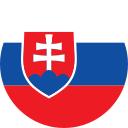
1st call for applications for co-financing microprojects
On June 30, 2016, as part of the Interreg VA Poland-Slovakia Cross-Border Cooperation Program, the Carpathian Euroregion together with the Higher Territorial Unit in Prešov announce a call for funding for micro-projects.
The call for proposals is launched for microprojects applying for funding under priority axis 1. Protection and development of the natural and cultural heritage of the border area and priority axis 3. Development of cross-border education and lifelong learning
Application deadline
Recruitment lasts until September 14, 2016, 15:00.
The date of the contest settlement
December 2016 / January 2017
How to submit applications
Applications in the Interreg VA Polska-Slovakia program are completed in two languages: Polish and Slovak (individual microproject in the national language with a summary in the partner's language) and are submitted in electronic form using the Generator of applications and settlements and in the paper version, which should be provided by registered mail, courier or in person, respectively to the seat of the Association of the Carpathian Euroregion Polska / WJT in Prešov no later than on September 14, 2016, 15:00.
The date and time of receipt of documents, both in electronic and paper form, to the Carpathian Euroregion / WJT Preszów are binding.
- Electronic version submission - the application must be completed and submitted using a special application, the so-called generator of applications and settlements.
- Submission of the paper version - the paper version in the form of a printed, signed and sealed application, which was sent via a generator with attachments, should be submitted in 2 separate copies.
Place of submission of applications
Applicants from Poland:
office of the Association of the Carpathian Euroregion Poland
Market 16
35-064 Rzeszów
tel./fax. 17 852 52 05
Applicants from Slovakia:
Higher Territorial Unit of Presov
Prešov Self-Government Country
Námestie mieru 2
080 01 Prešov
tel. 051/7081 525, 7081 526

Who can apply?
Eligible applicants:
- government and self-government administration bodies, their unions and associations,
- units established by the state or local government to provide public services,
- institutions of the education system and universities,
- non-profit non-governmental organizations,
- European Groupings of Territorial Cooperation,
- churches and religious associations.
Support area
Poland - Carpathian Euroregion:
- Krosno subregion: Jasło poviat, Krosno poviat, town with the rights of the Krosno poviat, Sanok poviat, Leski poviat, Brzozowski poviat, Bieszczady poviat,
- Przemyśl subregion: Przemyśl poviat, city with Przemyśl poviat rights, Lubaczów poviat, Przeworsk poviat, Jarosław poviat,
- Rzeszów poviat and the city with Rzeszów poviat rights (Rzeszów subregion).
Slovak side - Self-governing Prešov Region:
- Period Snina, Period Humenné, Period Stropkov, Period Medzilaborce, Period Svidnik, Period Vranov nad Topľou, Period Prešov, Period Sabinov.
What can I get a grant for?
As part of the selection of micro-projects implementing activities falling under priority axis 1, Protection and development of the natural and cultural heritage of the border area
- Construction or modernization of cross-border recreational infrastructure in the vicinity of cultural institutions, monuments, landscape and national parks that are part of cross-border tourist routes (e.g. creation of new and modernization of existing tourist routes: bicycle paths, hiking trails, nature and landscape routes and greenways, thematic cultural routes and related infrastructure, viewpoints, "Park and Ride" points, parking spaces close to paths and trails and cross-border integration of paths, etc.),
- Renovation and conservation works as well as modernization of cultural heritage objects located on cross-border tourist routes,
- Cooperation programs between institutions, including mutual exchange of movable monuments and museum objects (e.g. temporary and touring exhibitions, joint ticket systems),
- Establishing and developing cross-border intersectoral cooperation for the heritage of the border area between entities in the field of preservation and protection of cross-border cultural and natural resources: integrated projects in the border region, organization of thematic conferences, seminars and workshops, cooperation between institutions and promotion of joint activities for the protection of natural resources, including protection of biodiversity),
- Development and implementation of common cross-border standards and guidelines for the protection and preservation of cultural and natural heritage,
- Actions for cross-border integration and building a common identity, e.g. coordinated educational programs / initiatives including activities devoted to historical and cultural heritage and ecology, as well as sports and language courses,
- Joint cross-border promotion carried out in order to promote natural and cultural attractions of the border area and increase the number of their visits (e.g. organization and participation in joint events, fairs, conferences, workshops and seminars),
- Actions for the joint protection of the natural environment, including the protection and restoration of the proper condition of species and natural habitats, ensuring the maintenance of ecological connectivity, stopping the influx of alien species, stopping the degradation of natural and landscape values,
- Educational activities in the field of risk management and security,
- Joint cross-border educational activities promoting cultural and natural heritage,
- Joint training for guides, conservators and representatives of institutions involved in activities for the protection of the natural and cultural heritage of the borderland,
- Using ICT tools to preserve and promote cultural and natural heritage resources, applications for mobile phones, websites, creating cross-border ecological products and e-products and services; cross-border information and promotion campaigns conducted with the use of modern communication tools, digitization and digital exchange of resources, multimedia presentation of cross-border heritage, exchange of specialist knowledge on the digitization of cultural heritage, creation of common repositories of cultural heritage.
As part of the selection of microprojects implementing activities falling under priority axis 3, Development of cross-border education and lifelong learning
- Joint cross-border programs and initiatives for students and teachers in specialist and vocational education institutions
- Joint development and promotion of specialist and vocational education offer
- Implementation of cross-border activities supporting social inclusion and social participation
- Cross-border exchange of good practices
- Activities aimed at identifying needs in the context of specialist and vocational education
All activities must be of a cross-border nature.
It is not possible to co-finance activities aimed at creating or improving the hotel and catering base and infrastructure, the main purpose of which is to conduct economic or social-educational activities, e.g. hotels, guesthouses, hostels, restaurants, catering facilities, sports fields, sports halls forming part of educational institutions , community centers.
The program also does not finance activities consisting only in the construction or modernization of teaching facilities, e.g. construction, modernization of schools, training rooms, purchase of equipment.
Project selection criteria
The assessment will take into account the project's readiness for implementation (including the formal and legal readiness of the investment) and the proven cross-border nature of investments and activities.
Types of microprojects
- Joint microproject - value of co-financing: min. EUR 2,000 max. EUR 100,000 Maximum total value of the budget: EUR 140,000.00
- Individual micro-project - co-financing value: min. EUR 2,000 max. 50,000 EUR Maximum total value of the budget: 70,000.00 EUR
Under the ongoing call for proposals, joint microprojects will be preferred.
Project co-financing percentage
The maximum value of co-financing from the European Regional Development Fund is 85% of the eligible costs of the micro-project.
Co-financing of the microproject from the state budget's special-purpose reserve is up to 5% , the beneficiary's own contribution is min. 10% .
The general pool of funds allocated to co-financing projects
1. priority axis
The estimated value of funds available under the call for proposals is - EUR 2.7 million :
- Carpathian Euroregion - EUR 1.8 million
- WJT in Prešov - 0.9 million EUR
Priority axis 3
The estimated value of funds available under the call for proposals is - EUR 503 775.06 :
- Carpathian Euroregion - EUR 339,995.64
- WJT in Prešov - EUR 163,779.42
Necessary documents
The documents applicable for the call for applications, including the program document, the Microbial Beneficiary's Manual with appendices and the applicable guidelines are available in the Program Documents tab.
Other important information
At the stage of the initial formal evaluation, it will not be possible to correct / supplement / submit explanations to the submitted documents.






